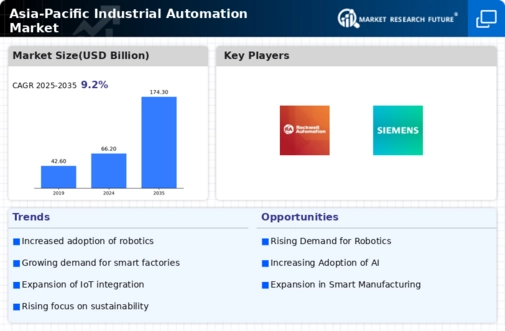Asia-Pacific Industrial Automation Market Summary
As per Market Research Future Analysis, the Asia-Pacific Industrial Automation Market was valued at USD 66.18 Billion in 2024 and is projected to grow from USD 72.27 Billion in 2025 to USD 174.28 Billion by 2035, with a CAGR of 9.2% during the forecast period. The market is driven by a focus on quality, precision, energy efficiency, and sustainable practices in manufacturing. The adoption of collaborative robots (cobots) is enhancing productivity and safety in industrial settings. Additionally, the integration of digital technologies is leading to the development of smart factories, further boosting market growth.
Key Market Trends & Highlights
Key trends driving the Asia-Pacific Industrial Automation Market include the adoption of collaborative robots and digital technologies.
- CAGR of 9.2% from 2025 to 2034; Market expected to reach USD 174.28 Billion by 2035.
- Collaborative robots are increasingly deployed for tasks like pick-and-place and assembly, enhancing efficiency.
- SCADA systems are the leading revenue-generating segment, enabling real-time monitoring and control.
Market Size & Forecast
| 2024 Market Size | USD 66.18 Billion |
| 2035 Market Size | USD 174.28 Billion |
Major Players
Key players include ABB Ltd, Hitachi, Ltd., Mitsubishi Electric Corporation, OMRON Corporation, Rockwell Automation, Inc., Siemens, Yokogawa Electric Corporation, Koyo Electronic Industries, Co., Ltd., Industrial Automation (M) Sdn Bhd, and Emerson Electric Co.












Leave a Comment